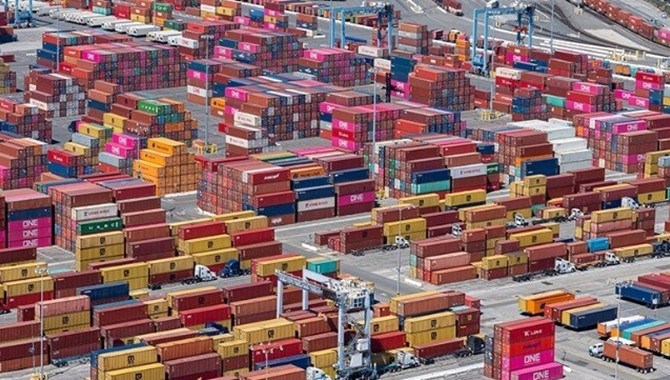
The build-up of empty containers at Chinese ports and lower ocean shipping costs should be taken as positive signs instead of hints of slumping global trade, according to senior Chinese trade analyst Gu Xueming.
Gu, who is director of the Chinese Academy of International Trade and Economic Cooperation (CAITEC), a think-tank affiliated with the Commerce Ministry, noted that foreign trade has started 2023 strongly for China.
Data from the General Administration of Customs (GAC) published Tuesday show that China’s exports of goods rose to 3.5 trillion yuan (about 506.10 billion U.S. dollars) in the first two months of 2023, 0.9 percent higher than the same period last year.
On the empty containers which were interpreted negatively by some observers, Gu said it was largely a proactive move by freight companies.
"The empty containers clogging ports are due to an oversupply following a container shortage in 2021. It is a proactive deployment by foreign trade companies who are optimistic about the outlook for China's foreign trade recovery," Gu told China Central Television (CCTV) in an interview.
He said that over the past three years, importers and exporters have been grappling with soaring container shipping fees, which reached their peak in 2022.
"The build-up of empty containers at ports and the decreasing container freight rates are but some of the indicators of the development trend of foreign trade, not all there is to look at. They need to be viewed in a dialectical way. Now, container freight rates are falling as the marine shipping market returns to normal. This is natural, for freight rates are going back to normal. Therefore, these indicators do not show signs of a decline in China's foreign trade," Gu said.
China has been diversifying its trading relationships in recent years and, while exports to traditional markets continue to increase steadily, exports to emerging markets have become the new growth engine for China’s foreign trade, as Gu pointed out.
"In 2023, opportunities and challenges coexist in China's foreign trade. The International Monetary Fund (IMF) predicts global GDP growth slowing to 2.9 percent. The World Trade Organization (WTO) expects world trade in goods to increase by 1 percent. Both figures are lower than that of last year, indicating a grim prospect for the foreign trade development. However, China has a relatively complete industrial chain and supply chain. With digital trade booming, and full implementation of the 'Belt and Road Initiatives' and the Regional Comprehensive Economic Partnership Agreement (RCEP), I think in general, China's foreign trade development, which is underpinned by a strong foundation with many selling points and a broad market reach, will likely achieve stable growth," said Gu.
Gu is among the 2,172 CPPCC members who are attending the ongoing "Two Sessions", a key event on the Chinese political calendar which refers to the annual meetings of the National People's Congress (NPC), China's top legislature, and of the CPPCC, the country's top political advisory body.
Source: CCTV
The opinions expressed herein are the author's and not necessarily those of The Xinde Marine News.
Please Contact Us at:
media@xindemarine.com


 Ningbo Containerized Freight Index Weekly Commentar
Ningbo Containerized Freight Index Weekly Commentar  Ningbo Containerized Freight Index Weekly Commentar
Ningbo Containerized Freight Index Weekly Commentar  Ningbo Containerized Freight Index Weekly Commentar
Ningbo Containerized Freight Index Weekly Commentar  BIMCO Shipping Number of the Week: Bulker newbuildi
BIMCO Shipping Number of the Week: Bulker newbuildi  Ningbo Containerized Freight Index Weekly Commentar
Ningbo Containerized Freight Index Weekly Commentar  Ningbo Containerized Freight Index Weekly Commentar
Ningbo Containerized Freight Index Weekly Commentar